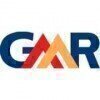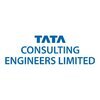Filter interviews by
Clear (1)
Al-Hani Construction & Trading Co. Senior Leader Engineer Interview Questions and Answers
Al-Hani Construction & Trading Co. Senior Leader Engineer Interview Experiences
1 interview found
I applied via Recruitment Consultant and was interviewed in Nov 2020. There were 5 interview rounds.
Interview Questionnaire
6 Questions
- Q1. Your career profile in short
- Q2. If a subordinate does not listen to you what steps can you take.
- Ans.
Steps to take if a subordinate does not listen to you
Try to understand the reason for their behavior
Communicate clearly and assertively
Provide feedback and set expectations
Involve HR if necessary
Consider disciplinary action as a last resort
- Q3. I have to proceed very carefully in this case. I will first meet the person separately and discuss with him the problem openly between myself and him. I shall discuss with him openly solutions to sort out ...
- Q4. If a project exceeds the estimated cost what steps can be taken
- Ans.
Steps to take if a project exceeds estimated cost
Re-evaluate the project scope and requirements
Identify areas where costs can be reduced without compromising quality
Consider alternative solutions or approaches
Communicate with stakeholders and adjust expectations
Implement cost control measures
Monitor progress and adjust plans as necessary
- Q5. Firstly reduce the number of people working in the project. Next check the materials and see if cheaper alternatives can be used. Next check the design and go for a design revision to make the project cos...
- Q6. You have never been to Kuwait. How will you adjust to the new team here.
Interview Preparation Tips
Top trending discussions






Interview questions from similar companies

Senior Engineer Interview Questions & Answers
Larsen & Toubro Limitedposted on 10 Sep 2017
I was interviewed before Sep 2016.
Interview Questionnaire
1 Question
- Q1. Ocampo, basic electronics and C
Interview Preparation Tips
Duration: 1 hour
Total Questions: 50
Skills: Embedded Systems, C Programming
College Name: Sahyadri college of engineering

Interview Questionnaire
3 Questions
- Q1. Why do you want to join the company
- Ans.
I want to join the company because of its innovative projects and strong company culture.
I am impressed by the company's track record of successful projects.
I believe the company's values align with my own professional goals.
I am excited about the opportunity to work with a talented team of professionals.
I see great potential for growth and development within the company.
- Q2. Why should we choose you
- Ans.
I am a dedicated and hardworking individual with relevant skills and experience.
I have a strong work ethic and am committed to delivering high-quality results.
I have relevant experience and skills that align with the requirements of the position.
I am a quick learner and adaptable to new environments.
I am passionate about the industry and eager to contribute to the team.
- Q3. What profile would you like to like to work in
- Ans.
I would like to work in a marketing and communications profile.
Experience in creating marketing campaigns
Strong communication skills
Ability to analyze market trends and consumer behavior
Proficiency in social media and digital marketing
Collaboration with cross-functional teams
Interview Preparation Tips

Software Engineer Interview Questions & Answers
Larsen & Toubro Limitedposted on 20 Feb 2015
Interview Questionnaire
1 Question
- Q1. About Yourself
Interview Preparation Tips
Experience: Test level was medium, as i also sat for mahindra, i found L&T test was harder than mahindra!
Tips: Just study RS agarwal
Round: Group Discussion
Experience: It was easy for me, coz i was aware about tips of GD
Tips: Be the leader, if possibleTalk in between, even if u dont know topic much
Duration: 20 minutes
Round: Interview
Experience: This question was damn easy for me, coz i can talk more based on my activities & resume
Tips: Dont hesitate, stay calm & describe yourself, but not family background
General Tips: Be yourself, no technical knowledge is required(depends on panel u get)
Skill Tips: ""
College Name: IIT Roorkee
Motivation: To get placed!

Senior Engineer Interview Questions & Answers
Larsen & Toubro Limitedposted on 10 Sep 2015
I applied via PLACEMENT
Interview Preparation Tips
Experience: Good detailed interview in terms of technical knowledge
Tips: Should be thorough with the projects you have done during the course
General Tips: be confident of what you put in your resume
Technical knowledge regarding projects undertaken during engineering should be sound
Be confident
Skills: Communication, Thinking capability, knowledge applying capability
College Name: V.E.S Institute Of Technology
Motivation: Opportunity to work in a renowned and core technical company
Funny Moments: We consider the interview panelists to be as tough as our viva externals. Interviewers are mostly on your side(contrary to viva professors :P)

Assistant Manager Interview Questions & Answers
Larsen & Toubro Limitedposted on 11 May 2018
Interview Questionnaire
2 Questions
- Q1. The question was regarding the present role I'm assigned and how the implementation of scheduling tools can help planning of E.P.C. in their present business unit.
- Q2. Technical question on my present project scheduling role & any other digital concept i'm associated with it currently.
Interview Preparation Tips
Experience: These days, not many companies shortlists the candidates by themselves instead they hire third parties in order to minimize the resources and cost burden. These talent acquisition members initially filters the resumes based upon the Years of Experience & the key skills which they receive from their parent companies by matching with the 70-80 % kind of similar roles of the candidates.
In my case, both my experience & roles are perfectly in sync with their requirements. So, they contacted me via naukri.com and asked me to share the updated resume & within a week I got the confirmation of my resume shortlisting & date for the 1st round of interview.
Round: Test
Experience: Primavera Scheduling Test

Senior Engineer Interview Questions & Answers
Larsen & Toubro Limitedposted on 12 May 2018
Interview Questionnaire
5 Questions
- Q1. Pertaining to the mentioned roles and responsibilities in your resume
- Q2. Planning and work order creation
- Q3. Piling activities
- Q4. Introduction
- Q5. Cross checking of documents
Interview Preparation Tips
Experience: On the criteria that I scored atleast 60% overall and had no gap between job/s.

I was interviewed before Mar 2020.
Interview Questionnaire
2 Questions
- Q1. Technical
- Q2. Family background
Interview Preparation Tips

Assistant Manager Interview Questions & Answers
Larsen & Toubro Limitedposted on 18 Jan 2020
I applied via Naukri.com and was interviewed in Jul 2019. There were 3 interview rounds.
Interview Questionnaire
4 Questions
- Q1. Asked about To mentioned areas of weakness of L&T, or needs improvement?
- Q2. How to make check or maintain elevation of Underground Piping.
- Ans.
Maintain elevation of underground piping by using level instruments and proper installation techniques.
Use a level instrument to check the elevation of the piping during installation.
Ensure that the piping is installed with a consistent slope to prevent low spots where water can accumulate.
Regularly inspect the piping to ensure that it has not shifted or settled, which can affect the elevation.
Consider using supports o...
- Q3. My Job specific role & responsibility, in previous organisation.
- Ans.
In my previous role as Assistant Manager, I was responsible for overseeing daily operations, managing staff, and ensuring customer satisfaction.
Managed a team of employees and delegated tasks effectively
Handled customer complaints and resolved issues in a timely manner
Created and implemented strategies to improve efficiency and productivity
Collaborated with other departments to achieve company goals
Conducted performanc
- Q4. Welding Electrodes for different materials.
- Ans.
Welding electrodes are chosen based on the material being welded. Different materials require different types of electrodes.
Electrodes for mild steel have a coating that produces a stable arc and minimal spatter.
Stainless steel electrodes have a coating that resists corrosion and produces a smooth, clean weld.
Cast iron electrodes have a high nickel content to prevent cracking.
Aluminum electrodes have a special coating ...
Interview Preparation Tips

Assistant Manager Interview Questions & Answers
Larsen & Toubro Limitedposted on 12 Oct 2020
I applied via Naukri.com and was interviewed before Oct 2019. There were 3 interview rounds.
Interview Questionnaire
2 Questions
- Q1. Concrete rate breakup, Asking rate
- Q2. Unique thumbrules breakup and unit conversion
Interview Preparation Tips
Joining in L&T is my (No) for evey civil engineers dream..
Thumbrules break up
Rebar - (D2/162) ----(Area x Lengh x 7850).
Like
Al-Hani Construction & Trading Co. Interview FAQs
Some of the top questions asked at the Al-Hani Construction & Trading Co. Senior Leader Engineer interview -
Recently Viewed
Tell us how to improve this page.
Interview Questions for Popular Designations
- Sales Team Leader Interview Questions
- Senior Team Leader Interview Questions
- Team Leader (Technical) Interview Questions
- Line Leader Interview Questions
- Process Leader Interview Questions
- Business Process Leader Interview Questions
- Assistant Team Leader Interview Questions
- Team Leader (Nontechnical) Interview Questions
- Show more
Interview Questions from Similar Companies
|
Electrician
4
salaries
| ₹0 L/yr - ₹0 L/yr |

Larsen & Toubro Limited

Tata Group

Shapoorji Pallonji Group

GMR Group
- Home >
- Interviews >
- Al-Hani Construction & Trading Co. Interview Questions >
- Al-Hani Construction & Trading Co. Senior Leader Engineer Interview Questions











